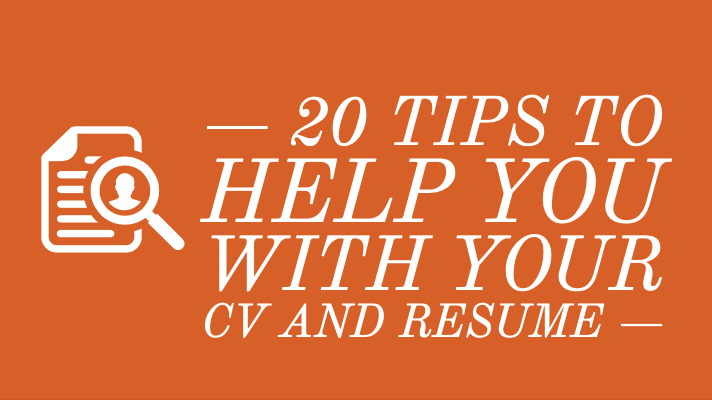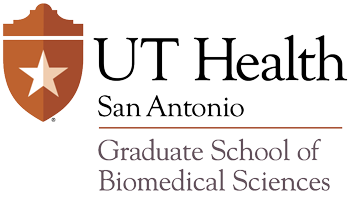The Career Series: 20 Tips To Help You With Your CV and Resume

Mary Bradley, the director of Career & Professional Development at the Graduate School of Biomedical Sciences at UT Health San Antonio, shares 20 tips about how to create your CV and resume. This is based on the October 3 workshop.

Tip 1:
Know The Difference Between A CV And Resume
A resume is used in positions other than academia. It is typically one to two pages and really should demonstrate your work history, skills and experiences. A CV is a historical story of academic credentials, achievements, accomplishments and experiences. It doesn’t have a word limit and is a summary of every publication, every award, every teaching experience, etc that you’ve done. CVs are generally about you and what you’ve done; resumes are about the job and what you can do for the employer.

Tip 2:
Talk To Your Lab About Your CV Format
A CV is generally used for academic, teaching, and research application and opportunities. Talk to your lab or PI to see if your field has any specific formatting that you need to use.

Tip 3:
Switch up your CV/resume based on the job
If you are applying to a research job, you should put your research experience first. If you are applying to a teaching job, you should put your teaching experience first. Resumes should be tailored for each position.

Tip 4:
Be Careful About What Email/Phone Number You Use
Your student email (livemail) addresses are only valid for three months after graduation so you may want to switch to a personal email especially if you are applying to a job close to graduation.

Tip 5:
Bold Your Name
Bold your name in your publications list to highlight yourself. If you have changed your name and your publication name is under a different last name, you can make note of this.

Tip 6:
Use Keywords
Nowadays, a lot of jobs go through a scanner before reaching the HR representative. If this is the case, be sure to include keywords that are mentioned in the job description posted online because these are the words that the scanner is looking for.

Tip 7:
The Order Matters
Put your resume and CV in reverse chronological order so the most recent experiences should be first. This applies for education, positions, publications, everything.

Tip 8:
Name Your Pages
Be sure to put your name on every page, for example [Last Name, Pg. 2 of 4]. This helps the employer if pages become separated when they print your document.

Tip 9:
Keep Your Formatting Consistent
Use 1” to 5” margins, a serif font, and a font size of 10 to 12 point. Also, try not to use many boxes because scanners cannot read them.

Tip 10:
Use PAR Statements
Use Projects – Actions – Results (PAR) statements to feature your skills and accomplishments. This includes projects you were involved with, activity/action you took (verbs), results (impacts) of your work and usefulness of the project.

Tip 11:
Be Mindful Of The Reader
Try not to use jargon or acronyms that the reader is unfamiliar with. For instance, they may not know that AACR means the American Association for Cancer Research so you should spell it out if you can.

Tip 12:
What You Name The Document Matters
Be sure to name the title of your document with your name. If you put the year, be mindful that it is the current year so they don’t think you didn’t take the time to update your resume.

Tip 13:
Print It
Print out your resume/CV so you can proofread and doublecheck the layout and formatting.

Tip 14:
Explain Your Gaps
People tend to make things up when they see gaps so you should address it in your cover letter. For example, if you move a lot, you might want to explain that your family is in the military which explains why you have so many different locations in short time spans.

Tip 15:
Communicate With Your References
Contact your references before you apply for the jobs and ask if they would be willing to be a good reference for you. Also send them the job description, your current CV/resume, and what you would like them to articulate about you.

Tip 16:
Take The Opportunity To Explain Why In The Cover Letter
Cover letters are great because it’s your opportunity to put anything you can’t strategically say in your resume. You can also catch their attention and express excitement for the job..

Tip 17:
Give People Time
If you need a reference letter, give your references at least 2 to 4 weeks to write their letter. Meet with them to discuss your letter so they can tailor it to the position.

Tip 18:
Consider What You Write On Your CV or Resume
Be aware that a potential employer can ask you about anything you put on your CV/Resume. You can add hobbies but be mindful that they may ask you about them.

Tip 19:
Be Organized
Keep a list of the jobs to which you have applied. Remember to keep copies of the job description because it can sometimes get taken down when the job is closed. Also, save the specific cover letter/resume that you submitted for the job.

Tip 20:
What You Shouldn’t Have
You should not have your picture on your resume or CV. You should also not include personal information such as your social security number, age, marital status, religious affiliation. You also don’t need to spell out “contact information” or “email address” as this takes up extra room.
